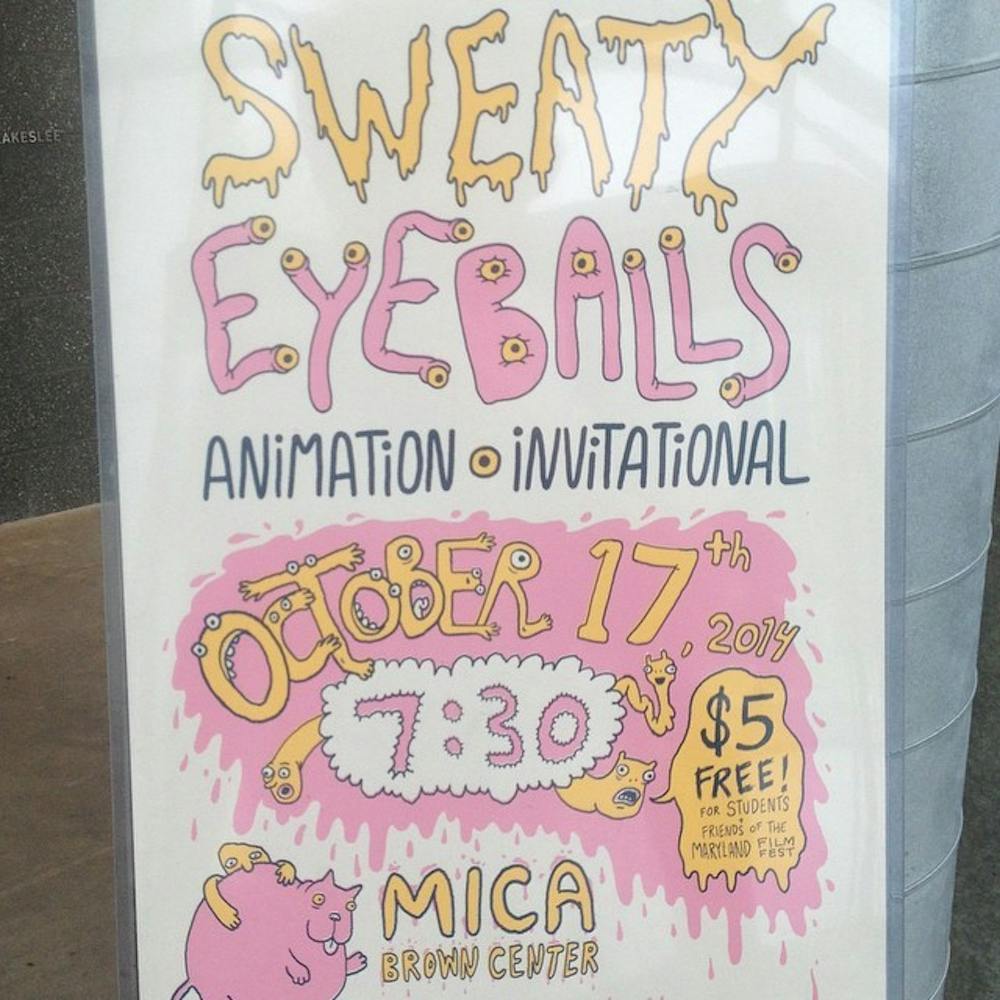This weekend saw the inaugural Sweaty Eyeballs Animation Festival move into Station North in celebration of animated works of all kinds. Sweaty Eyeballs has taken many different forms since founder Phil Davis began the program in 2012 — fluctuating between annual and monthly screenings at Creative Alliance, the Maryland Institute College of Art (MICA), and its current home, the Stavros Niarchos Foundation Parkway Theatre.
Transitioning to a weekend-long international film festival for 2019, this has been Sweaty Eyeballs’ biggest event yet.
Things kicked off on Friday night with a screening of six silent animated shorts with live accompaniment from local musicians from the community.
On the other hand, Saturday and Sunday were packed with screenings of both international and local shorts programs, feature-length animated pieces and workshops with award-winning independent filmmakers.
From the psychedelic poster to the playful logo and festival name itself, Sweaty Eyeballs is dedicated to innovation and is unafraid of the bizarre.
Attending the festival on Saturday, I was excited to see their mission statement reflected in nearly every aspect of the film festival — to “showcase unique, experimental and diverse voices in the field of animated filmmaking with a focus on innovation in craft, storytelling and work that questions preconceived notions of what animation can and should be.”
Davis opened the second block of international shorts by describing the program as his quote-on-quote “mixtape,” an amalgam of sorts featuring diverse voices and mediums built around a collection of central, cohesive themes.
The program did not disappoint; it featured shorts from seven different countries and various animation styles, utilizing mediums as diverse as digital rendering, pen and paper, and claymation.
Moments of playful wonder were in pieces such as Sander Joon’s Sounds Good, which follows a sound recordist synthesizing various sounds into music, or Margaret Bilialis’s Opening Night, an animated musical dedicated to the importance of being open with one’s emotions.
Elsewhere, animation was utilized to discuss important social issues, such as Stephanie Delazeri’s Supervising the Supervision of Female Workers, which saw archival film drawn over and recut to take a critical look at patriarchal values, or Palwasha Azimi’s Period, a digitally animated celebration of menstruation.
My favorite moments from the program saw expressions of loss, confusion, or something in between. Siqi Song’s stop-motion film Sister details growing up with a sister he never had due to the one child policy in China.
The film’s ending dedication “to the brothers and sisters we never had” was an emotional apex, bridging the film itself to the events serving as its primary inspiration. It was a poignant moment that was a highlight of the film.
Anna Samo and Lisa LaBracio’s The Opposites Game, an animated accompaniment to Brendan Constantine’s poem of the same name, sees a class of children struggle to determine the antonym for “gun.” The animation plays out on the pages of a poetry book in stop-motion.
Using an animated poetry book as a means of navigating the narrative seems fitting.
But it’s the way Samo and LaBracio pay attention to the smallest details, like whiting out words or brushing eraser shavings out of frame, that gives a sense of true classroom immersion.
The next program of the day was a retrospective of the works of Joanna Priestley, a director and producer of 30 animated shorts.
It was fascinating to see the trajectory of Priestley’s work over the last 35 years and how her craft has evolved with technology. She tackles themes of womanhood in pen and paper with her 1988 piece She-Bop as well as digitally in her 2007 short Streetcar Named Perspire.
Her creative eye and imaginative energy have flourished throughout her career, as seen in films like the comical Streetcar, depicting the literal roller coaster of menopause as well as her self-portrait film Voices.
These films lay out the limitlessly unique ways in which filmmakers can utilize animation.
A variety of digital experimental pieces were also shown, which Priestley said came about after she learned Adobe Animate and became fascinated by the different types of visual creations the program is capable of producing.
The final pieces in the program featured some of Priestley’s most recent works, which include collaborations with the poet Taylor Mali through digital visualizations of two of his poems.
Priestley described how these came about after the program concluded; from first hearing Mali’s poetry at a festival, to figuring out how to contact him, to the numerous fan videos that have appeared online since the debut of their collaborations.
During this Q&A, Priestley also shared wisdom on receiving artistic grants, saying success comes in “one out of every 17” attempts both for grants and for life in general.
Given the multitude of Priestley works and the quality of each, it’ll be exciting to see where she goes next.





